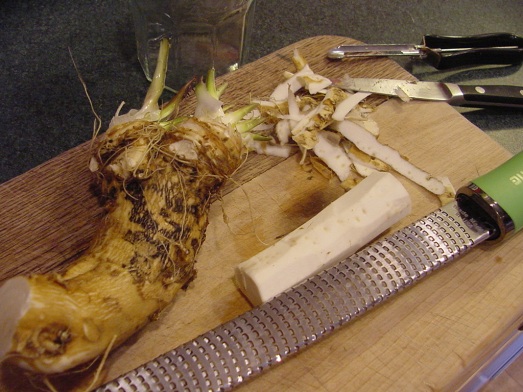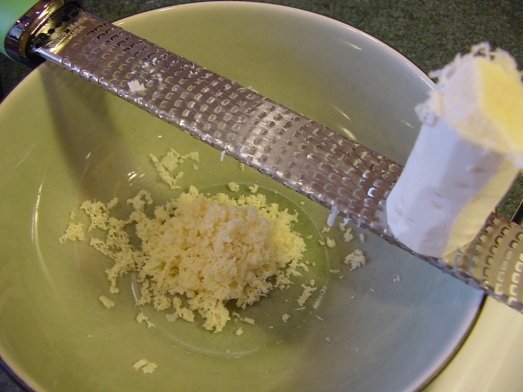 My husband has a rather exaggerated opinion of my capacities.
My husband has a rather exaggerated opinion of my capacities.
I was out in the chilly, damp day digging out some horseradish roots, and he called over with concern, “don’t kill them all!”
Heh. Anyone who grows this hardy perennial knows that’s about as likely as harvesting every last sunchoke tuber and having a barren patch come spring. Ain’t happenin’.
I did once have difficulty getting a horseradish patch established. Admitting this to fellow gardeners caused looks of suspicion, head-shaking, and the occasional smirk. What kind of vegetable farmer can’t grow horseradish?
I was saved by my friend Amy, who quietly slipped me some roots and said something to the effect of: You’re being too nice to it. Take these roots and whack them up against a fence post. Swear at ’em a few times, then stomp them into the dirt where you want your patch. Kick some dirt over the top, swear one more time, and walk away.
Voila! A healthy rampant horseradish patch that proceeded to invade everything within twenty feet.
The patch harvested today is one I inherited from the previous owner of this farm. It’s fairly small on account of being hemmed in by a double layer of landscape fabric, but it’s plenty prolific. I forked up three good-sized chunks of root to trim and store in the crisper for winter sauce-making.
 I am an absolute purist when it comes to “prepared horseradish.” The only acceptable ingredients are grated horseradish, vinegar, and a pinch of salt. It’s not that I object to adding this basic preparation to other sauces, dressings, dips, etc., but I am absolutely opposed to those commercial horseradish preparations that contain soybean oil, weird un-pronounce-able ingredients, and artificial flavor.
I am an absolute purist when it comes to “prepared horseradish.” The only acceptable ingredients are grated horseradish, vinegar, and a pinch of salt. It’s not that I object to adding this basic preparation to other sauces, dressings, dips, etc., but I am absolutely opposed to those commercial horseradish preparations that contain soybean oil, weird un-pronounce-able ingredients, and artificial flavor.
That last one irks me the most–why in the heck would you add artificial flavor to horseradish? Horseradish tastes like horseradish, and even if it’s not fresh and pungent, it still tastes like horseradish; it just doesn’t have the side benefit of clearing your sinuses. I’ve seen horseradish that’s gotten so old it’s gone kind of brownish colored, and it STILL smelled like nothing other than horseradish.
Speaking of the heat factor, the fresher and finer-grated the root is, the hotter it is. My dear friend Matt from over at Cookrookery gave me a microplane (yay! a microplane!) for my 40th birthday, and so that’s what I used to grate this fresh-out-of-the-earth root.
 Tears of joy, I assure you. And pain.
Tears of joy, I assure you. And pain.
Normal, reasonable people (I’ve heard) often grate their horseradish outside. Well, it’s cold out there, so I just turned on the range hood exhaust fan.
On the tongue, the flavor is outstanding. I used apple cider vinegar plus a little Real salt–tiny pinch. And there was just enough time to savor that clean horseradish flavor before the searing heat ran up through my sinuses and momentarily blinded and incapacitated me.
Yum.

